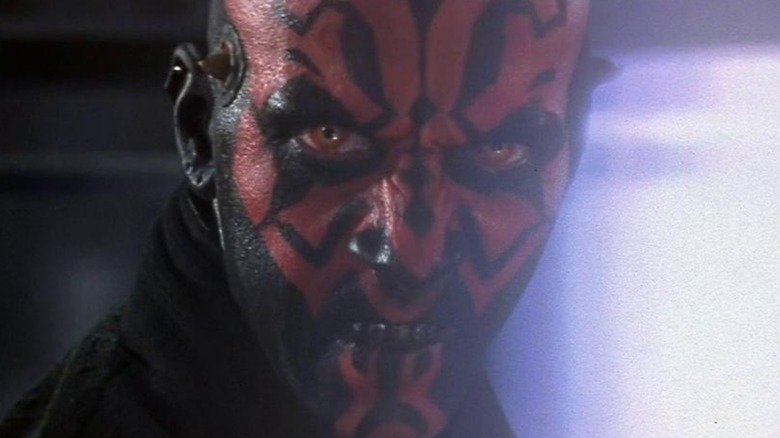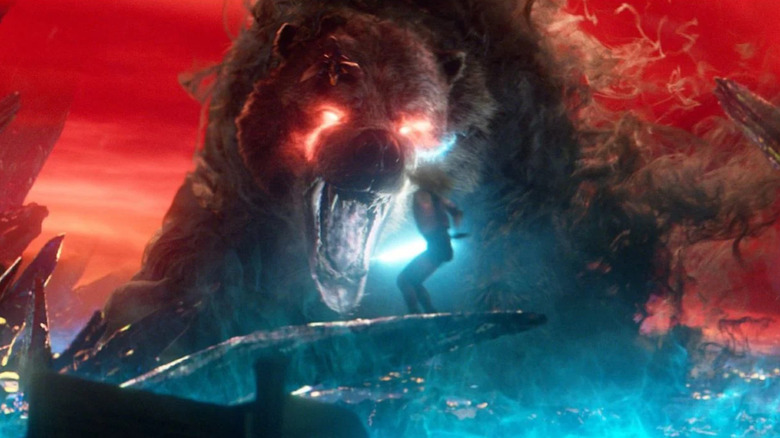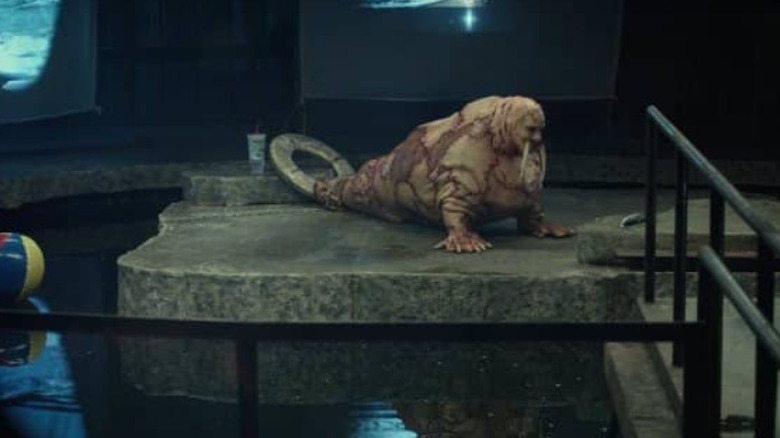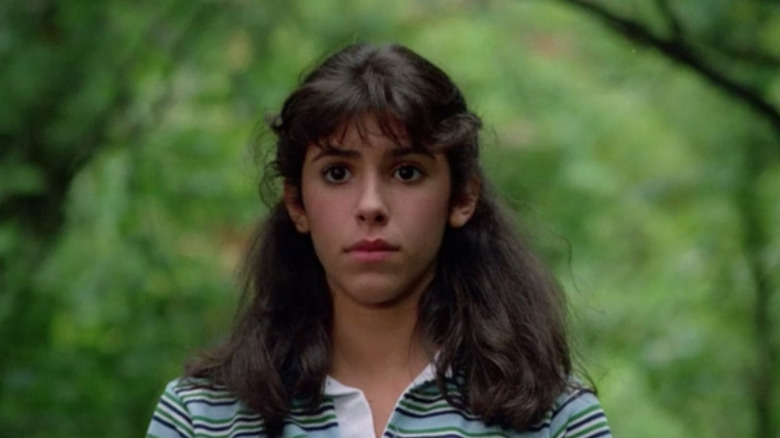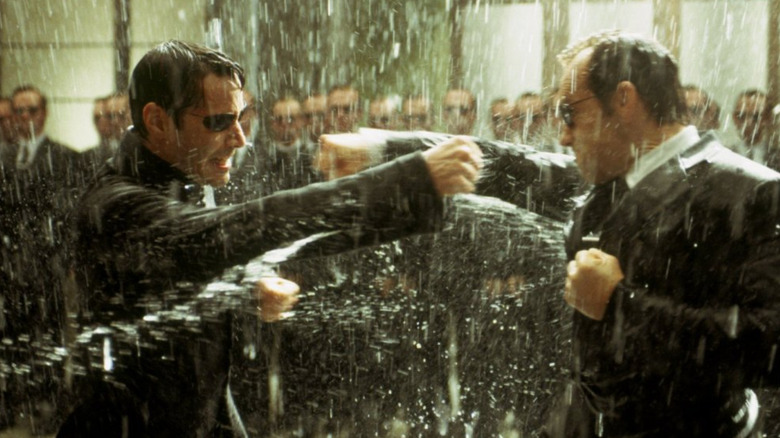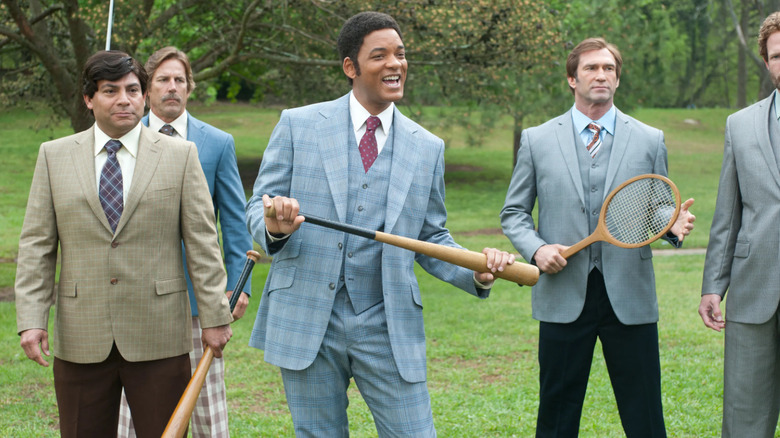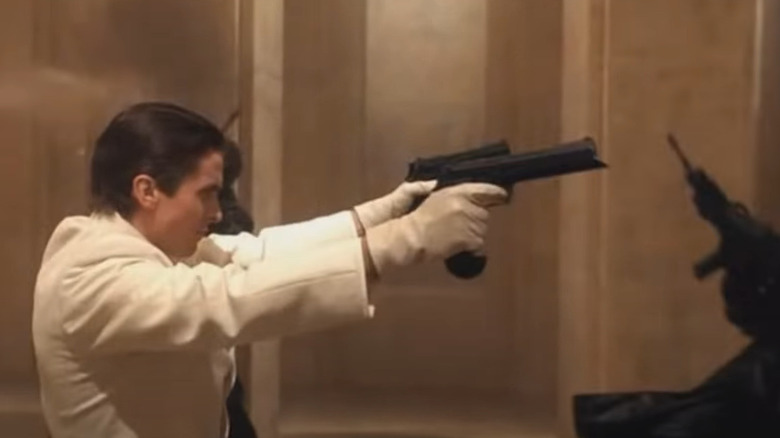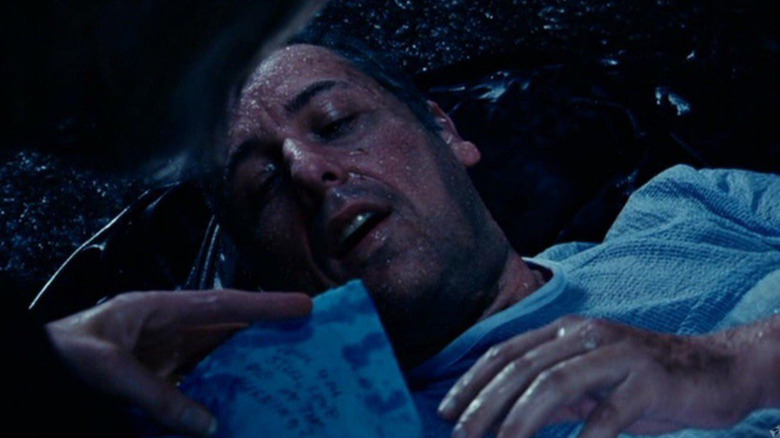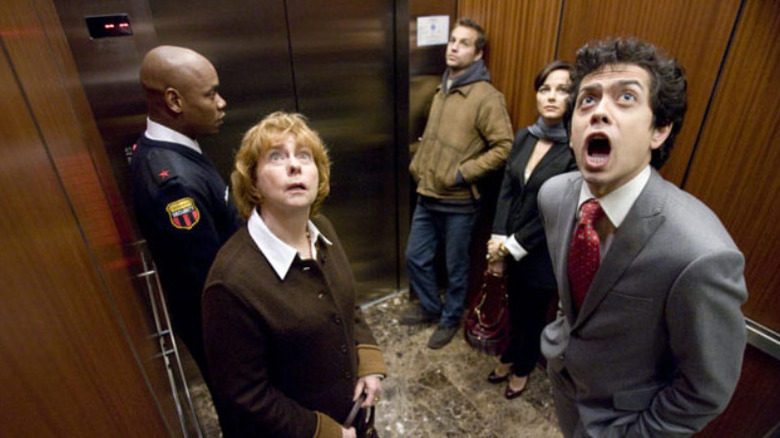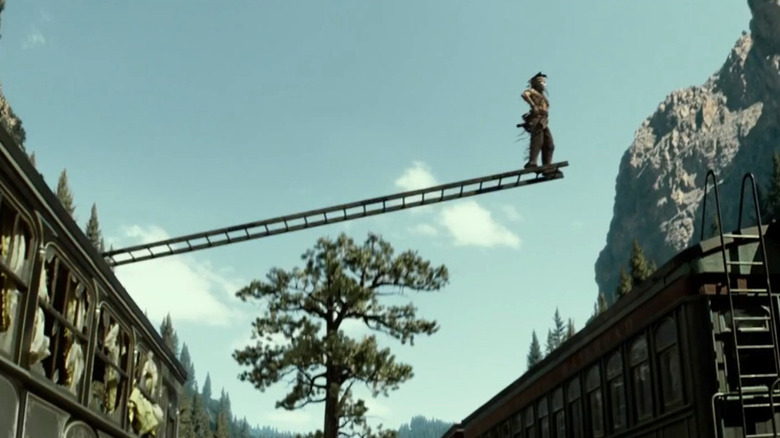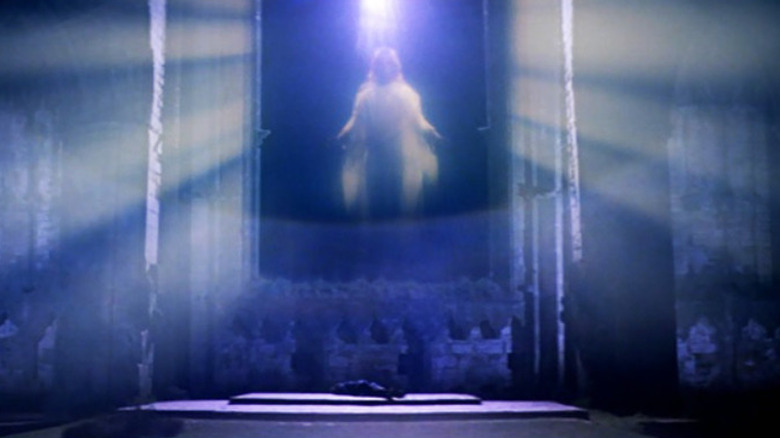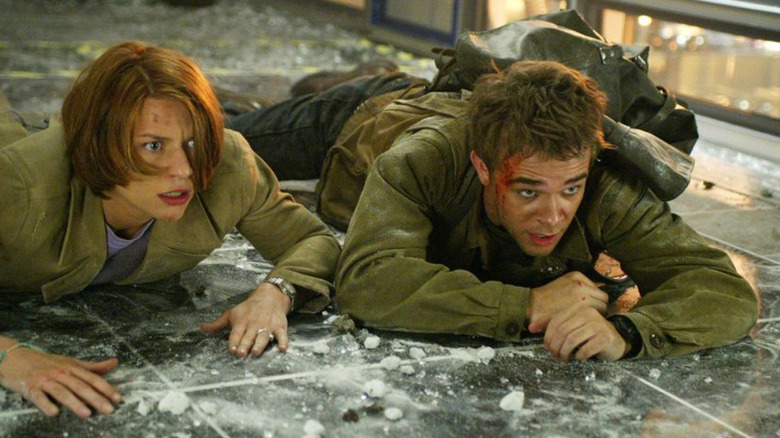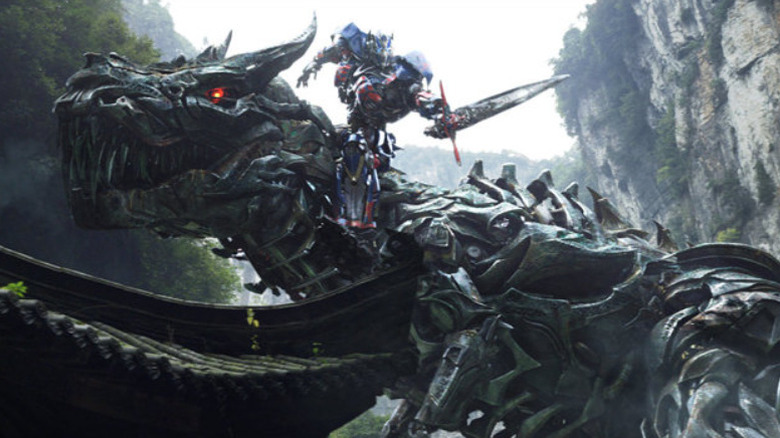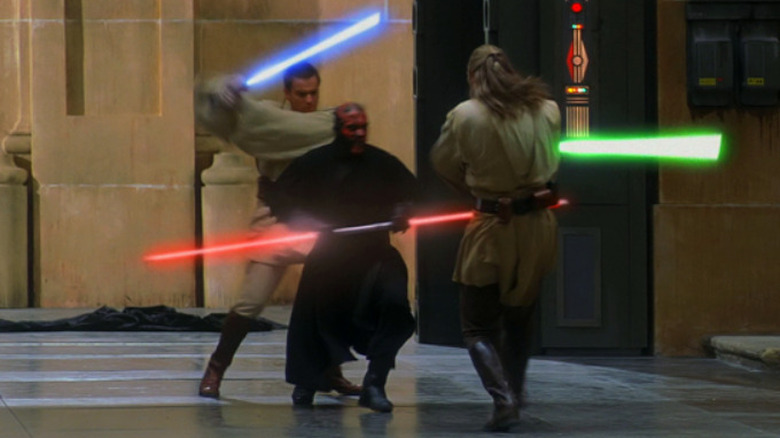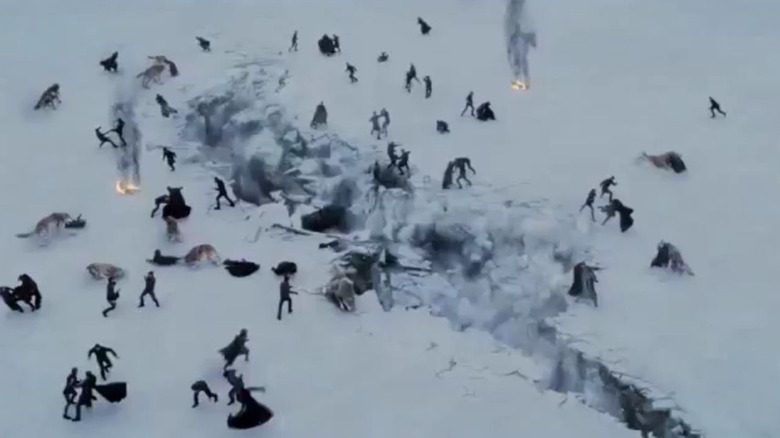Bad Movies That Are Worth Watching Just To See Their Great Endings
Making a good movie is a complicated process. Making a crowd-pleasing blockbuster is an even more complicated process. Hollywood often tries to do both, hiring talented filmmakers to bring their visions to the big screen, and then messing with that vision with studio-mandated edits. The result of this strategy is the churning out of a mass of movies every year that are generally seen as hit or miss. The film might start out promisingly enough with an intriguing premise and a strong cast of actors, only to lose steam by the time the final act arrives, leaving audiences with an ending that fails to satisfy or entertain. Other movies just start out disappointing.
But just as you are regretting your decision to spend money on tickets for the movie, it surprises you with an awesome ending that leaves you wanting more. Here are several movies that did not deliver in the first two thirds of their runtime, only to finish with an impressive final act. (Warning: Massive spoilers ahead)
The New Mutants (2020)
"The New Mutants" had the misfortune of being the last entry in 20th Century Fox's "X-Men" series of films. As such, instead of being allowed to be an experimental little horror project as the makers of the movie clearly originally intended it to be, "The New Mutants" had to shoulder the burden of providing a satisfying conclusion to one of the most iconic superhero movie franchises of all time.
This inability to decide between being an horror movie and a crowd-pleasing blockbuster makes the first two-thirds of "The New Mutants" a real slog to get through. Most of the runtime is spent sitting with the main characters while they provide their backstories in unwieldly exposition dumps. When the actual horror starts, it is so generically by-the-numbers that the impulse to shiver in fear is overcome by a desire to roll your eyes. But then the third act of the movie finally allows itself to be a proper "X-Men" film by focusing on the mutant character who kicks the most butt.
Anya Taylor-Joy is endlessly watchable as Illyana Rasputin aka Magik, a mutant with magical abilities, a huge sword, and access to teleportation abilities. The highlight of the entire movie is the final fight between Magik and a giant demon bear with glowing red eyes. Magik's swagger as she marches up to the bear, tossing out quips and double-teaming the demon bear with her dragon sidekick makes us wish the film had been her solo origin feature instead.
Tusk (2014)
Kevin Smith has earned a reputation as a middle-brow auteur with a string of small budget, offbeat films that are more cult hits than regular blockbusters. One of the strangest entries on Smith's filmography also happens to be one of the strangest films Hollywood has ever produced, and not in a good way.
"Tusk" tells the story of Wallace Bryton (Justin Long), a popular podcaster who winds up staying at the mansion of Howard Howe (Michael Parks), a retired seaman in a wheelchair. Most of the movie consists of long conversations between Wallace and Howard in which we learn about the latter's tragic past, as well as the investigations of a man named Guy LaPointe (Johnny Depp) into Howard's whereabouts.
The horror aspects of the story are intriguing as Howard slowly transforms a helpless Wallace into a human/walrus hybrid, but those parts are too few rare to help the sluggish narrative and overlong runtime. The best part of the twisted tale of Wallace's fate comes at the end, when the human/walrus hybrid is consigned to live out his days in a wildlife sanctuary. After meeting his girlfriend one last time, Wallace lets out a heartbreaking bellow, proving the human part of his tortured mind still exists.
Sleepaway Camp (1983)
The years between 1978 and 1984 are generally considered the golden age of slasher films, when the genre produced such classics as "Halloween" (1978), "Friday the 13th" (1980), and "A Nightmare on Elm Street" (1984). "Sleepaway Camp" was designed to cash in on the thriving slasher market of the times complete with a summer camp setting and one of the biggest surprise twists in the history of the genre.
Angela (Felissa Rose) and Ricky (Jonathan Tiersten) are sent to Camp Arawak for the summer, where Angela's quiet and introverted nature soon makes her the target of bullying. But the camp has bigger issues to deal with when a series of murders begin to occur on the premises. In terms of the killings, there's not much imagination or wit on display, and if the movie had relied on the murders alone, it would have been yet another forgettable D-grade slasher consigned to pop culture's garbage heap.
But "Sleepaway Camp" ends with the revelation that shy, quiet little Angela was the killer. This was because, all along, he was a boy named Peter who had been forced to grow up as a girl. The final shot of Angela/Peter standing nude and covered in blood while letting out an animal-like cry of rage and misery remains one of the most memorable scenes in any slasher flick.
The Matrix Revolutions (2003)
It's hard to overstate just how important the first "The Matrix" (1999) movie was for the sci-fi and cyberpunk genre. It would also be difficult to overstate how disappointing the two follow-up sequels to "The Matrix" were, particularly the third part of the trilogy, "The Matrix Revolutions."
In that film, everything that fans loved about the original "The Matrix" was dialed up to eleven. Yet this idea of "more is better" did not lead to a better viewing experience. The mythology of the series became hopelessly muddled, character motivations were all over the place, and answers to central mysteries that fans were hoping to receive proved disappointing, to say the least. Still, there was one aspect that the Wachowskis smartly kept from the previous movies: the battle between Agent Smith (Hugo Weaving) and Neo (Keanu Reeves).
This led to arguably the best fight scene in the entire trilogy at the end of "The Matrix Revolutions," when Neo willingly plugs back into the Matrix to face an army of Agent Smiths in the middle of the city amidst torrential rains. For that one brief action sequence, the film was able to capture the cool, grandiloquent aesthetic that made "The Matrix" such a classic, before the series succumbed to an overuse of poor CGI and philosophical posturing.
Anchorman 2: The Legend Continues (2013)
2004's "Anchorman: The Legend of Ron Burgundy" was one of the last great mid-budget comedies before studios became fixated on blockbuster cinematic universes. True to form, the movie got an uninspiring sequel years later that crammed in more jokes but lacked the necessary setup or satisfying payoffs.
In "Anchorman 2: The Legend Continues," Ron Burgundy (Will Ferrell) gets fired from his old job as co-anchor for a prestigious news network in New York City. Depressed, suicidal, and living away from his family, Ron tries to make a new start at the world's first 24-hour news network where he tells audiences the news they want to hear rather than what they need to hear. A series of mishaps lead Ron to renouncing his new position in the end when he is cornered by several other news teams who want to take him down.
Ron is joined by his loyal friends, Brick Tamland (Steve Carrell), Brian Fantana (Paul Rudd), and Champ Kind (David Koechner). The competing news teams contain the who's who of celebrity guest stars, including Will Smith, Liam Neeson, Jim Carrey, Kanye West, Tina Fey, Amy Poehler, Marion Cotillard, and Sacha Baron Cohen. The resulting brawl is as hilarious as anything from the original "Anchorman" film.
Equilibrium (2002)
The success of the "Matrix" trilogy of movies gave rise to a slew of stylish films set in futuristic dystopian societies where the protagonist must overcome years of brainwashing to overthrow an oppressive regime. "Equilibrium" was one such film. Christian Bale starred as John Preston, an enforcement officer working for a government that has outlawed emotions.
While on a mission, Preston accidentally destroys a dosage of the medicine that keeps his emotions suppressed. As a result, he begins to feel the stirrings of emotions for the first time, and decides society needs to go back to being a feeling, empathetic world. While the premise of the story is generic enough, "Equilibrium" did add one major element to action movies that is still used today, called "Gun kata."
Gun kata is a fighting style that treats a gun as a complete weapon that must be swung around balletically rather than kept stationary. The result of this technique, as evidenced by the big fight scene at the end, is one of the coolest action sequences ever seen in films, as Preston swings his guns around like swords to cleave through an army of henchmen.
Click (2006)
Adam Sandler has earned something of a dubious reputation as the king of low-brow comedies that critics trash but audiences flock to see. The 2006 movie "Click" has a basic premise that lines up neatly with Sandler's formula for comfortable laughs, as his main character Michael Newman discovers a remote that lets him control real life.
At first, Newman is thrilled to use the remote for his personal gain, from skipping through the boring parts of conversations to freezing time so he can fart in his employer's face. It's exactly the level of humor that audiences have come to expect from Sandler's movies, which never rises above the barely-acceptable levels of wit or charm. But as the film progresses, it takes on an unexpectedly dark edge as Newman realizes he had unwittingly skipped past major parts of his life.
Near the end, Newman finds that his relationship with his family has crumbled because he was never there with them at the important moments in their lives. In a gut-wrenching scene, we see Newman lying alone on his hospital bed filled with regret over his life choices. While the movie ends on a positive note when he is able to undo his past mistakes, Sandler's journey as Michael Newman remains one of the most genuinely moving sagas out of his entire filmography.
Devil (2010)
Filmmaker M. Nigh Shyamalan is one of the biggest examples of a promising creative force hobbled by his own success. After the breakout success of "The Sixth Sense," audiences began to expect mind-blowing twist endings from every Shyamalan movie, whether it was earned or not, or whether it made any sense in the context of the story itself.
Shyamalan's 2010's movie "Devil" was both the victim and the beneficiary of this state of affairs. The entire movie hinges upon the central mystery concerning five people trapped in an elevator, one of whom is the Devil himself. The only way to save themselves from the Devil is for the others to confess their sins and repent.
The rest of the movie is a slow and sometimes irritating burn as each person in the elevator must grapple with their past even as the Devil takes the life of one of the five members at a time. After a lot of buildup and some nifty foreshadowing, the twist ending revealing the true identity of the Devil is surprisingly effective, and ranks among the best endings to any Shyamalan movie.
The Lone Ranger (2013)
2013's "The Lone Ranger" was clearly meant to be a cool amalgamation of the blockbuster appeal of the MCU and the "Pirates of the Caribbean" series. It starred then-up-and-coming actor Armie Hammer as the titular Lone Ranger, while Johnny Depp co-starred as Tonto, his Native American compatriot and the narrator of the film.
Boasting an impressive budget, an A-list cast, and the best action scenes that money can buy, "The Lone Ranger" was bogged down by an uninspired plotline regarding Hammer's character attempting to stop a local magnate from taking control of a railroad for some nefarious reason or another. It's the kind of old-timey premise that was pulled off far better in 1998's "The Mask of Zorro."
But despite the general feeling of bland competency that "The Lone Ranger" suffers from, it does rise to promising heights during the big action showdown at the end. The scene takes place on a moving train surrounded by towering forests and mountains. Like something out of a Buster Keaton movie, Tonto makes use of a long ladder to get up to all kinds of hijinks, disposing of the villain's army in the process. There's even a homage to "Pirates of the Caribbean" when Tonto strikes a "Captain Jack Sparrow" pose in the middle of the battle.
Omen III: The Final Conflict (1981)
"The Omen" franchise is one of the most famous horror series of all time. It tells the story of the Antichrist, born Damien Thorn, who rises from his murderous beginnings as an evil child to become a powerful adult, one obsessed with ending the Second Coming.
In "Omen III: The Final Conflict," Damien is portrayed as a full grown adult by Sam Neill who now works as the U.S. Ambassador to Great Britain. In truth, Damien is arranging his personal forces to execute the Christ-child before he can grow to be a threat and begin the Second Coming. The movie's biggest weakness is condensing what was meant to be an epic confrontation between the forces of heaven and hell into a few skirmishes between men in suits.
But there is one scene at the end when the epic scope of the film is almost realized. After getting stabbed in the back, Damien staggers through a church when he is visited by a vision of Christ himself, all while music swells in the background. All Damien can do in front of the literal face of God is bitterly remark, "You have won nothing," before dying. After three movies worth of being told about the awful power of the Antichrist, there is a great deal of satisfaction in watching Damien crumble before a higher power.
Terminator 3: Rise of the Machines (2003)
There is perhaps no better example of a franchise running out of steam right out the gate but still jogging along through reputation alone than the "Terminator" series of films. The first two entries in the franchise are widely accepted to be among the greatest action and sci-fi movies ever made. Unfortunately, the rapid descent in quality began immediately afterward with "Terminator 3: Rise of the Machines."
The absence of James Cameron from the director's chair is sorely felt as the movie lurches from one action set callback to the next. Everything about the movie screams "been there, done that (and better)." The character of John Connor as played by Nick Stahl also fails to evoke the level of emotion that made Edward Furlong's take on the character so memorable.
However, the end of the movie does justify a re-watch, if not entirely on its own merit, then as a conclusion to the entire "Terminator" saga up to that point. As the evil A.I. Skynet fires missiles worldwide and the long-prophesied "Judgement Day" finally arrives, John Connor steps up to the plate and accepts his destiny as the leader of humanity and last hope for mankind.
Transformers: Age of Extinction
Much has already been said about the sharp decline in the quality of the "Transformers" franchise right after the first entry in the series. "Transformers: Age of Extinction" continues in that tradition with a muddled story where Mark Wahlberg plays an inventor and transformers battle each other for yet another alien MacGuffin in spurts of frenetic action scenes that go on too long.
There is little emotion or stakes in the film's misplaced sense of urgency and the stuffing of yet more "Transformers" lore into an already overstuffed movie. Cars turn into alien robots, human tycoons make plots to save mankind when in reality they're dooming it, and Wahlberg does his best to not look completely bewildered throughout the entire process. And yet, despite the movie's flaws, the awesomeness of the ending can be summed up in three words: Giant robot dinosaurs.
Why are there dinobots in a "Transformers" movie? Who cares. The main thing is you get to see Optimus Prime and his cohorts ride atop the dinobots in the final epic battle. For a brief moment, the self-important tone of the franchise gives way to the childish glee of watching your favorite toys come to life on the big screen in all their humongous glory — which is really all that fans ever wanted out of the franchise in the first place.
Star Wars: Episode I – The Phantom Menace (1999)
The release of the "Star Wars" prequel trilogy was the first time that devotees of the franchise realized that maybe George Lucas was not the all-encompassing genius single-handedly responsible for the success of the original trilogy of the series. "Star Wars: Episode I –- The Phantom Menace" is the first part of the prequel trilogy, and it set a pretty underwhelming tone for the next two parts.
The dialogue is stilted. Actors looks like they have been dragged unwillingly to the front of the camera to say their lines. Jar Jar Binks (Ahmed Best) seemed liked he had wandered onto the wrong movie set. There is also a really long bit about the inner workings of the Galactic Trade Federation for some reason. And yet, despite the flaws, the movie also gave us a breakout character in the form of Darth Maul (Ray Park).
Thanks to Maul's double-bladed lightsaber and his acrobatic skills, his final battle against Qui-Gon Jinn (Liam Neeson) and Obi-Wan Kenobi (Ewan McGregor) is one for the ages. Since then, the "Star Wars" franchise has tried time and again to capture the awesomeness of that lightsaber battle again through enemies that wield multiple lightsabers. But none have earned a place in pop culture to the same level.
The Twilight Saga: Breaking Dawn – Part 2 (2012)
The "Twilight" films are one of those things that seem to inspire intense love or intense hate in equal measure. One reason its detractors often give for their negative response to the franchise is because it makes vampires look weak instead of the dangerous creatures that they have traditionally been portrayed as in pop culture.
"The Twilight Saga: Breaking Dawn –- Part 2" tells the final chapter of the story of Bella (Kristen Stewart) and her love for Edward (Robert Pattinson). Now a full vampire, Bella must work with Edward's family to stop the vampire council known as the Volturi from killing Bella and Edward's baby. As the Volturi approaches, Bella's side is joined by the werewolves led by Jacob (Taylor Lautner) as well as a host of new vampire characters with superpowers.
The final battle between Bella's army and the Volturi is surprisingly epic as the film transforms temporarily into a superhero team-up flick. People move at super speeds. Giant wolves fight vampires. Heads are ripped clean off. Side characters fall into a yawning abyss. Sure, the whole thing ultimately turns out to be a possible future which doesn't end up happening, but it's still a lot more action than audiences expect from a "Twilight" film.
